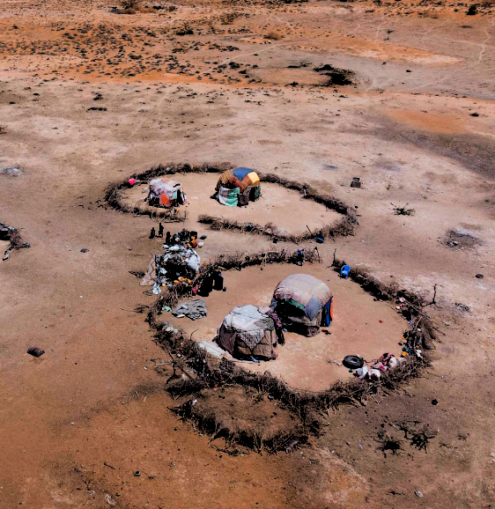Famine fueled by greed stalks the world’s poor
According to Oxfam and Save the Children, 1,500 people — mainly children under age 5 and elders — are dying every day in Ethiopia, Kenya and Somalia. The groups’ joint 2022 report, “Dangerous Delay 2: The Cost of Inaction,” relies on data from the U.N. and from relevant national, European Union and Pacific Community organization statistical sources.

Oxfam projects 350,000 people in those countries are in danger of dying and that 5.7 million children are facing extreme malnutrition by the end of 2022. A previous famine in 2011 saw 260,000 people die in Somalia — half of these children under the age of 5.
Other countries in Africa — particularly Nigeria and Egypt, as well as the nearby country of Yemen — are also suffering. Pictures and videos on social media of children with skin stretched over their bones are heart-wrenching and soul-searing.
The U.N. claims the world’s farmers are producing enough food to feed everybody and there is enough capital to pay the cost of doing so. But COVID-19 and the inflation that’s raging throughout the world has dramatically raised the price of food and the cost of getting it from producers to consumers.
According to the U.N. Food and Agricultural Organization, global food prices reached an all-time high in March 2022. The whole of East Africa saw the cost of a local food basket increase by 23% from February 2021 to February 2022.
The countries of East Africa have had to endure four years of a deep drought that has seriously affected their ability to feed their livestock and grow food — particularly corn and wheat. While that area has suffered long droughts in the past, many scientists feel the intensity of the current drought is due to global warming.
The U.N. World Food Program points to the particular vulnerability of Ethiopia and Somalia due to the conflict in Ukraine. These countries have seen 66% and 36% rises in their food basket costs. (WFP, “Implications of Ukraine Conflict . . .” Update #2, March 2022)
German Foreign Minister Annalena Baerbock held a June 23 conference in Berlin ostensibly to consider how to blunt the effects of the Ukraine conflict on world food prices. Standing next to U.S. Secretary of State Antony Blinken at a press conference to mark its conclusion, Baerbock said,“Russia is waging a cynical grain war, using it as a tool to make food prices [skyrocket] and destabilize entire countries.” (Washington Post, June 24)
However, the world’s imperialist countries want above all to use Russia’s blockade of Ukraine’s sea ports as the reason why the grain and edible oils that Ukraine produces can’t be exported. They certainly don’t want to consider that the Ukrainian mining of its harbors and the U.S.-instigated embargo against Russian wheat and fertilizer are major impediments to the movement of these supplies.
The G7 meeting of capitalist countries began June 25 with President Joe Biden making it clear that his coalition against Russia is still holding. The U.S. has backed up its support of Ukraine with over $6 billion in military aid.
Besides global warming and droughts, besides embargoes and boycotts, there is capitalist greed. According to an Oxfam report, 62 new “food billionaires” were created during the pandemic. The report was released ahead of this year’s Davos Forum, the annual meeting of the World Economic Forum, which advocates managing the “globalized world” with a self-selected coalition of multinational corporations, government and “civil society” organizations.
Food and agribusiness billionaires raised their collective wealth by 42% in the past two years of the pandemic as global food prices soared by 33.6% in 2021. (tinyurl.com/646wpd5d)

